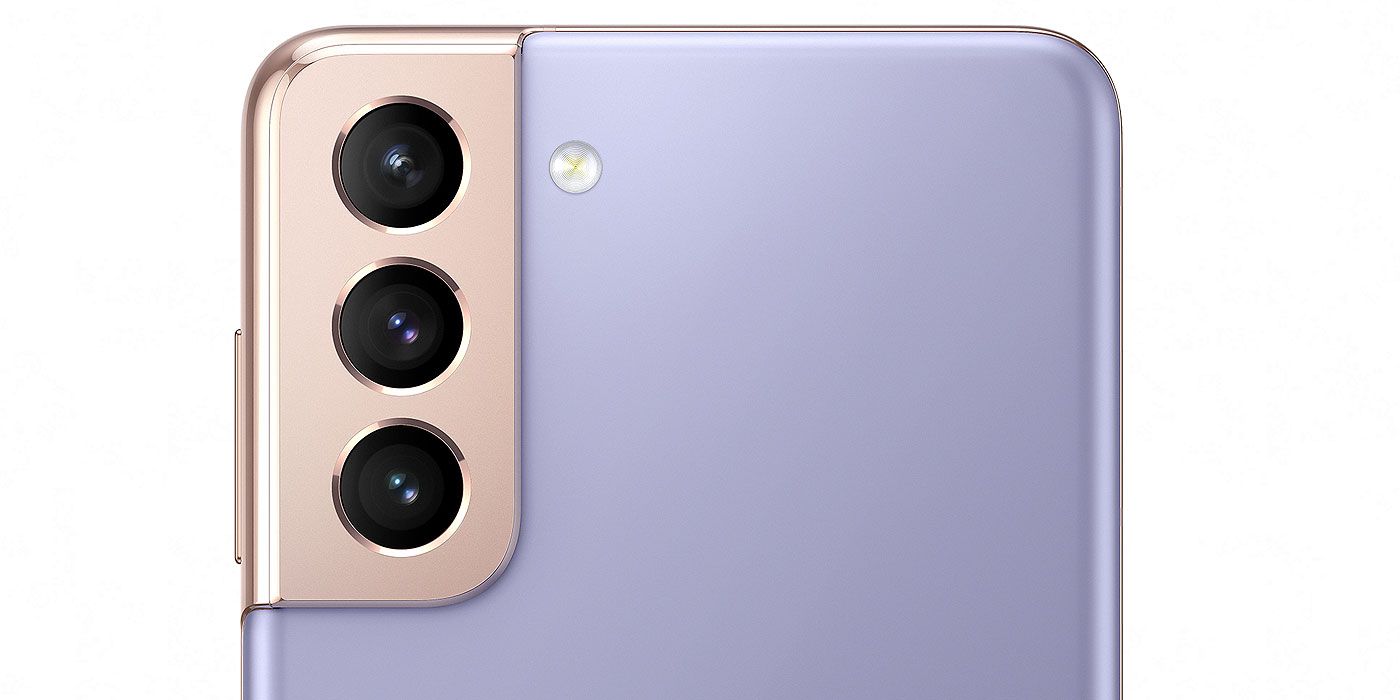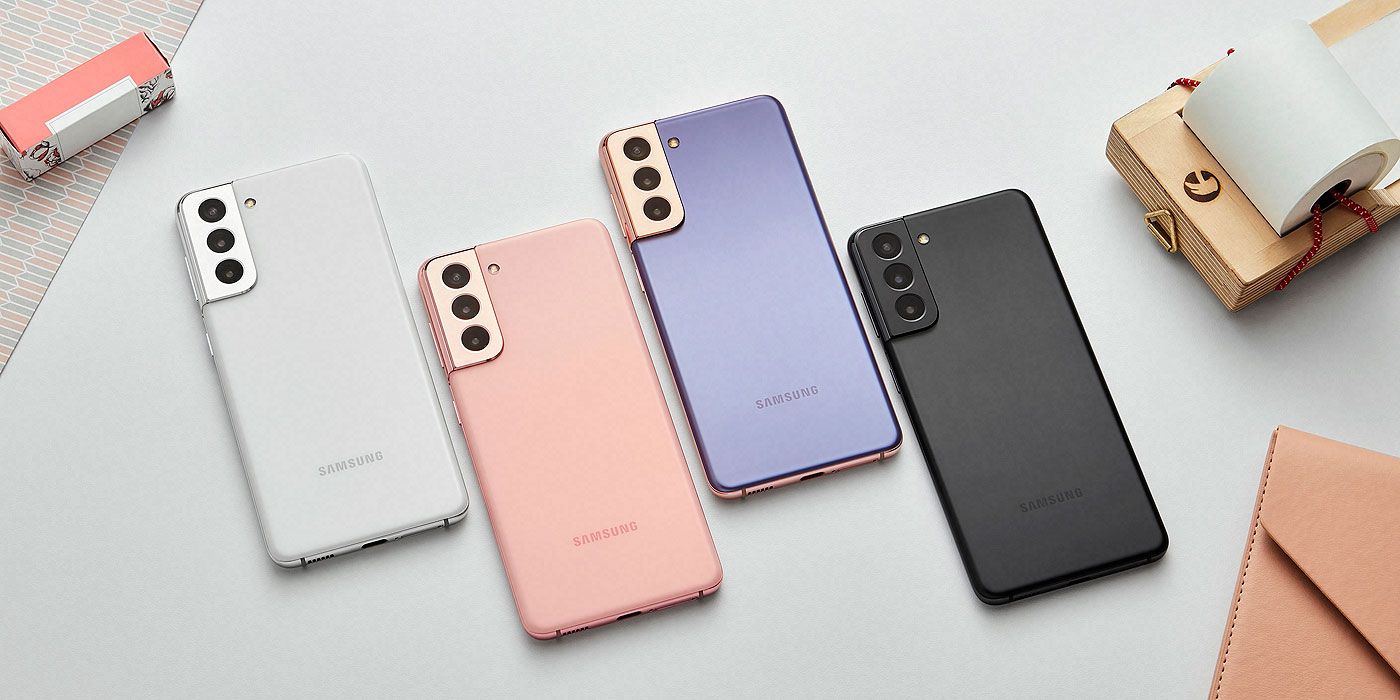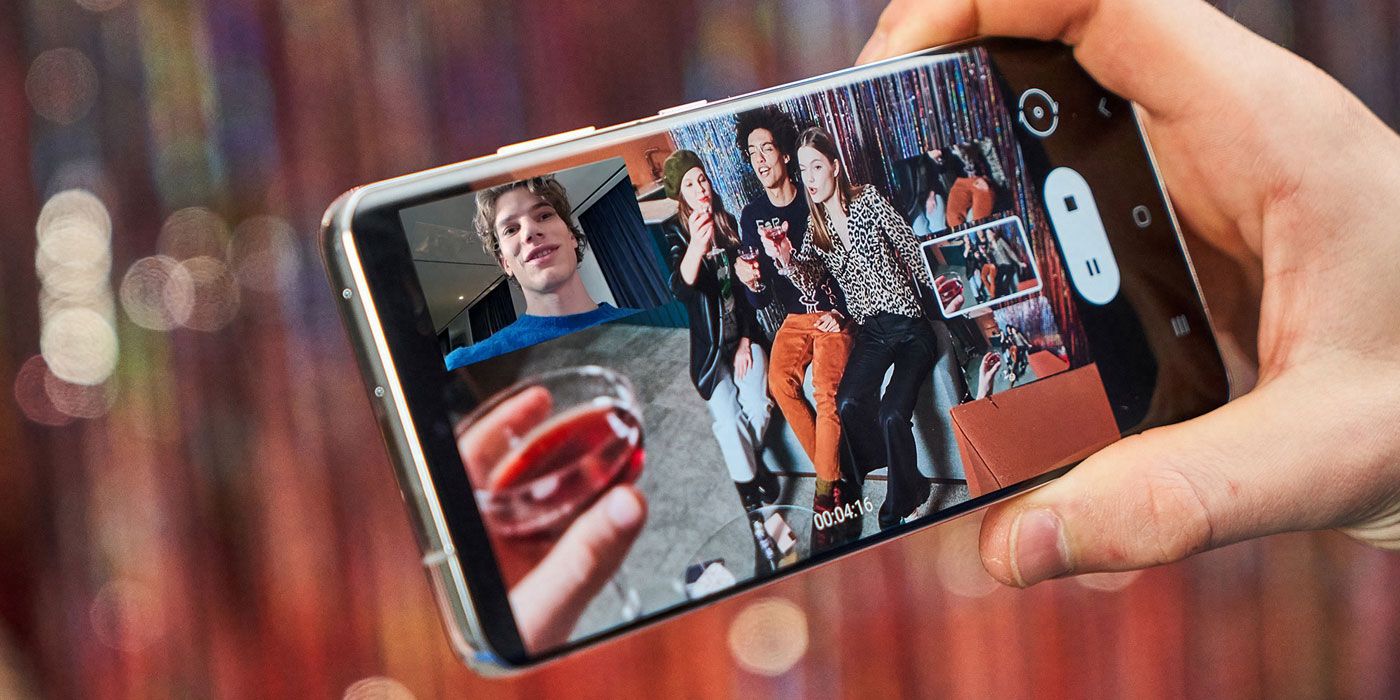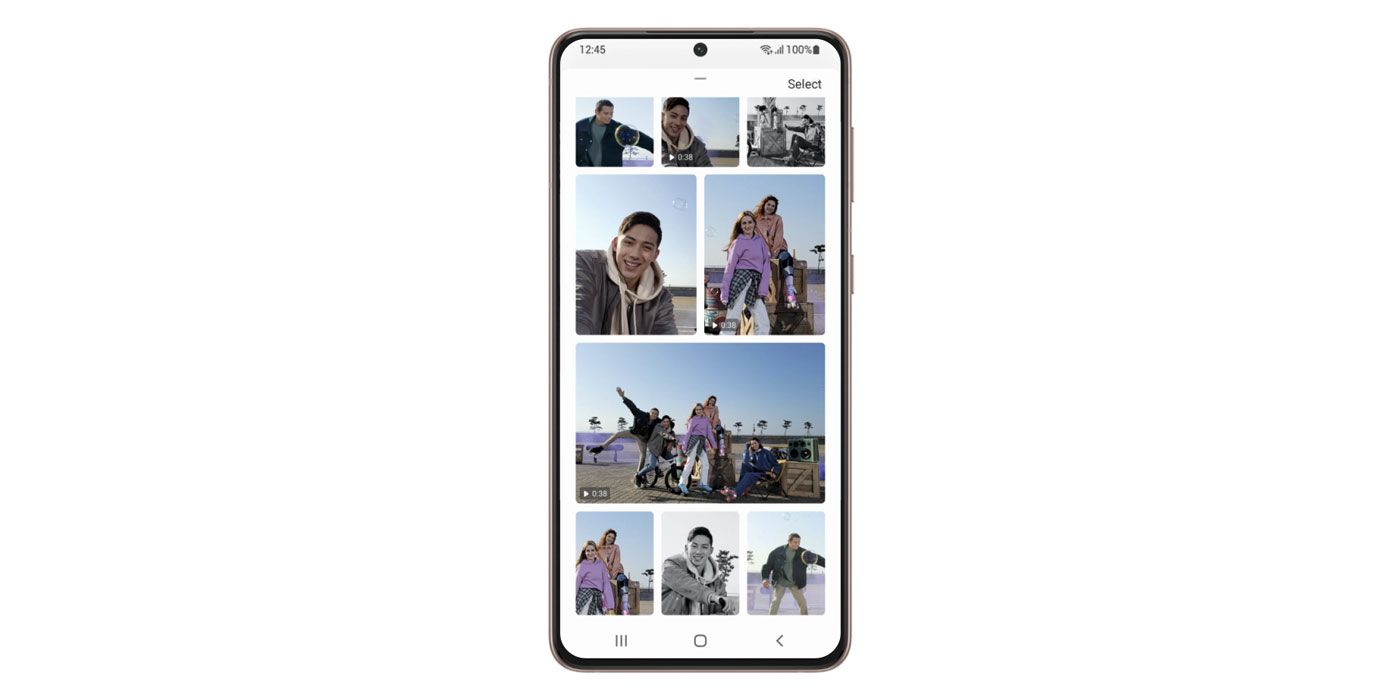Most consumers want a smartphone that can take good-quality photos and the new Samsung Galaxy S21 doesn't disappoint here. The Galaxy S21 series, which includes the S21+ and S21 Ultra, is available for pre-order and offers a variety of enhancements over last year's line, including with the cameras. Here's a hands-on look at some of the features of the Galaxy S21 camera system.
The Galaxy S21 series officially launched January 14 and will be released January 29. It follows last year's Galaxy S20 line, which completely revamped Samsung's camera design and added new ways to capture and record photos and video. The S20 series could shoot 8K video at 24fps and 4K video at 60fps, while the top-end S20 Ultra's rear camera system included a then-unprecedented 100x Space Zoom. In contrast, the Galaxy S20, S20+, and S20 FE had maximum zooms of 30x.
The look of the rear triple-camera array has been changed on the Galaxy S21 series. On the S21 (and S21+), the contour-cut metal housing sits in the top left corner, with the LED flash is next to the housing. It's a more aesthetically pleasing design, but the lenses themselves are the same as in the Galaxy S20. They comprise a 12MP ultra-wide-angle lens (0.5x magnification), a 12MP wide-angle lens (1x), and a 64MP telephoto lens (3x). As the ultra-wide-angle lens has a 120-degree field-of-view, pictures taken with it can appear a little warped with filters turned off. However, in the settings, there's an option for ultra-wide shape correction, which does an impressive job at fixing the distortion. While this setting isn't unique to Samsung, it's worth noting as some phones do this type of correction better than others. The front-facing camera on the Galaxy S21 is 10MP, which also matches its predecessor.
S21 Space Zoom Improvements
While the Galaxy S21 Ultra offers an upgraded 100x Space Zoom that uses two telephoto lenses, the Galaxy S21 and S21+ has to settle for 30x magnification again. But this year's Space Zoom gets a boost with Zoom Lock. The feature uses an AI-powered image stabilizer to reduce camera shake and what Samsung calls "advanced super-resolution image processing" to achieve better-looking photos.
When it's set to 20x or higher, a preview appears on the screen, showing a more-zoomed out view of the scene. Tapping the preview will effectively lock the view/focus in place so the image will appear clearer. Zoom Lock also launches automatically if the phone is held still for 1.5 seconds. This is a significant update as one of the main problems with taking photos with telephoto lenses is that the tiniest of movements are magnified. Autofocus can further exacerbate the issue as it constantly tries to readjust with each of those tiny movements. the Zoom Lock feature helps to correct this problem, although, of course, it can only do so much. If the phone is moved too much, it will basically unlock the zoom and the scene needs to be fairly bright to get decent results.
It's best to use the S21 outdoors in sunlight as the zoom is primarily digital. As mentioned above, the telephoto lens has a magnification of 3x so the Space Zoom is digitally increasing that magnification by up to another 10 times. Like with any phone at maximum zoom, one can expect images to contain a fair bit of noise if the scene doesn't have enough surrounding light.
S21 8K Video And Ultra-High-Res Pictures
Like the S20, the S21 can shoot 8K video at 24fps as well as 4K video at 60fps. The former is shot using high-efficiency video coding to save space on the phone, while the latter can be shot with or without HEVC turned on. It's a useful compression as a 4K 60fps video shot in HEVC is just over half the file size of one shot without it. The problem is that HEVC may not play on other devices.
It's also possible to grab stills from 8K videos and save them as ultra-high-res pictures. When playing back a video through the camera app, the user can click on the snap icon and it will save it as a photo with a resolution of 7,680x4,320 and a file size of around 4MB. The snap feature can also be used with non-8K videos but the photos will be lower resolution.
Becoming A Director With The Phone
One of the best S21 camera features is Director's View, which allows users to switch between lenses while shooting video. As seen in the photo of the S21 Ultra above, the feature provides live thumbnails of the lenses' views. If the user touches a thumbnail, the camera will switch shots on the fly. Unfortunately, it's not possible to zoom while in Director's View, likely because the mode uses all the lenses at once.
People can also record with the front-facing camera at the same time in order to catch their own reaction in what Samsung calls its Vlogger View. Unlike with the live thumbnails, the final video will include the front-facing camera's recording. It can be set to appear as a picture-in-picture over the main video, as seen above, or as a split-screen. The latter option might be a good option for people wishing to shoot a sit-down interview. It is a little gimmicky, though, and thankfully users can use Director's View without the front-facing camera.
S21's Updated Single Take
Samsung has updated its Single Take feature, which it introduced with the Galaxy S20 series. The feature is a quick way to capture both photos and videos with a single click of a button. The user just opens the camera app and switches to the Single Take mode. Then, after pressing the shutter button, the phone will start recording the scene. It's recommended to move the phone around to try different angles as it records. Using AI, it will then create a series of photos and video clips, supposedly offering the key moments of action.
The feature can be set to run between five and 15 seconds and the user can choose the type of shots that can be captured: filtered videos, filtered photos, portraits, and wide/cropped shots. The S21 series also adds two new categories: highlight videos and speed effect clips. As it sounds, the former incorporates a highlight reel while the latter adds slow-motion to some of the action captured. As with last year's iteration, Single Take is an interesting concept and could be useful in special situations, such as birthdays or family outings, but the feature feels more like a novelty than anything else.
Overall, the Galaxy S21 takes impressive photos and video. The phone also comes with a number of other features, including motion photos, an updated portrait mode with various studio effects for both the rear and front-facing cameras, and an improved super steady mode for HD videos at 60fps. While the S21 Ultra has more impressive specs, customers looking for a slightly more affordable camera phone, the S21 still offers a premium experience. The Samsung Galaxy S21 starts at $799.99 in the U.S. and C$1,129.99 in Canada.
Source: Samsung





